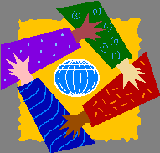
Distance learning, also known as virtual learning, is defined as any formal approach to learning where communication between the instructor and students is through different means of technology, and not through face-to-face interaction. This type of learning has been used since 1700s in the form of correspondence education; but with the advancement in technologies, this process now comes as far as involving the use of audio and visual effects, which started to develop in the 1900s.
Distance Education methods have evolved over the years tremendously. After the failure of radio-instruction in the 1930s, lots of efforts were put in developing television-instruction and had hope in it to prove effective. In 1948, Iowa state was one of the first educational districts in the US to air. Research shows that class-room television instruction proved to be just as effective as traditional face-to-face teaching.
Distance Education methods have evolved over the years tremendously. After the failure of radio-instruction in the 1930s, lots of efforts were put in developing television-instruction and had hope in it to prove effective. In 1948, Iowa state was one of the first educational districts in the US to air. Research shows that class-room television instruction proved to be just as effective as traditional face-to-face teaching.

By the 1960s, the launching of the first “flying classroom” by the innovative Midwest Program on Airborne Television Instruction (MPATI) took place, which spread educational programs through schools and to the general public in Indiana and some of the surrounding states. Internet marked the history of tele-education, giving access to both parties involved and proving to be the most efficient form of all. With its numerous methods of communication, it gives a variety for the user to choose from, and makes the learning method as real as possible.

The link below is a short video of the University of Southern California (USC) giving a brief introduction about distance education.
http://youtube.com/watch?v=jCXBwE40T-w
http://youtube.com/watch?v=jCXBwE40T-w
Examples of currently used technologies include telephone, broadcast video, internet chat (such as AIM), videoconferencing, or net meeting. These types of communication media are called synchronous technologies since they involve a teacher and students in different geographical positions, learning at the same time. The other type of communication involving the students in different geographical areas, and each of them learning at different times, and is called asynchronous technology. It includes voice mail/fax, videocassette, audiocassette, e-mail, and print materials.
Among the numerous universities offering online degrees is the University of the Phoenix, which is considered one of the largest universities in the US. About 9,600 faculty members work in its online campus, offering a degree possibly in 2 years only. Statistics show that 94% of its alumni would recommend it to other working adults.
Resources:
Fusco, Marjorie, and Susan Ketcham. Distance Learning for Higher Education: an Annotated Bibliography. 23 June 2008 http://books.google.com.eg/book
Jeffries, Michael. "Research in Distance Education." MA Distributed Learning. 14 July 2007 .
























